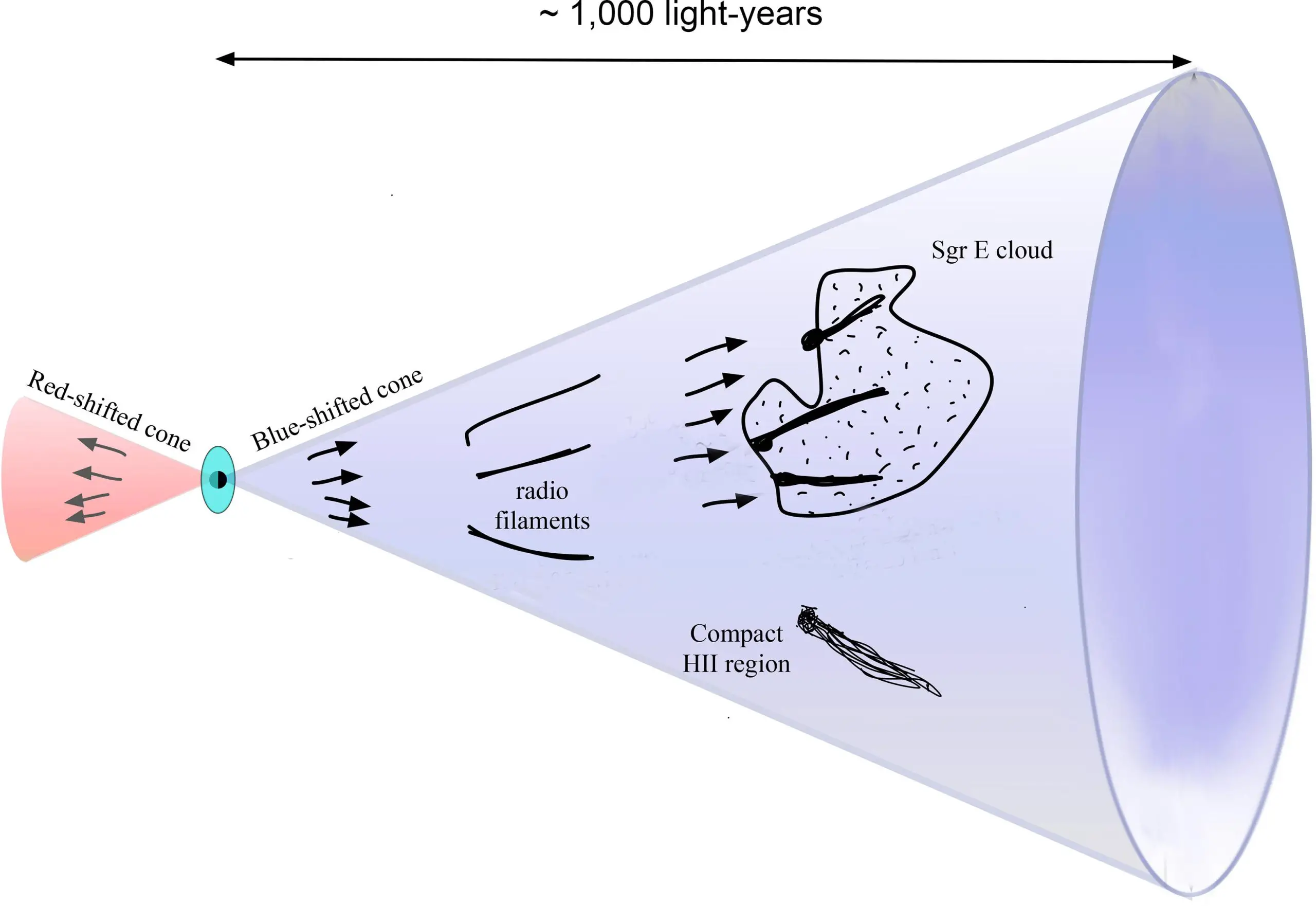Mysterious Filaments Found in the Center of Milky Way Leave Astronomers Stunned

A new group of horizontal filaments has been discovered by astrophysicists emanating from the supermassive black hole at the center of the Milky Way. These new filaments could bring scientists one step closer to understanding the black hole’s spin and accretion disk orientation and provide further insights into the galaxy’s nucleus. The population of new filaments look like spokes on a wheel radiating out from Sagittarius A*, unlike the previous gigantic, one-dimensional filaments which tower up to 150 light-years high and dangled vertically. Yusef-Zadeh, Professor of Physics and Astronomy at Northwestern’s Weinberg College of Arts and Sciences and member of CIERA, said "it was a surprise to suddenly find a new population of structures that seem to be pointing in the direction of the black hole... It is satisfying when one finds order in a middle of a chaotic field of the nucleus of our galaxy."
The study was published in The Astrophysical Journal Letters and follows four decades of research by Northwestern University’s Farhad Yusef-Zadeh, who first discovered the vertical filaments in the early 1980s with Mark Morris and Don Chance. The new horizontal filaments were uncovered using the South African Radio Astronomy Observatory’s (SARAO) MeerKAT telescope. Yusef-Zadeh's team utilized a technique to remove background and smooth the noise from MeerKAT images to isolate the filaments from surrounding structures. These new discoveries have been made possible due to enhanced radio astronomy technology, which the professor described as "a technical achievement from radio astronomers."
Although the two populations of filaments share some similarities, Yusef-Zadeh assumes they have different origins. He estimates that the new horizontal filaments are about 6 million years old and may indicate more advancements in technology in radio astronomy.
The vertical filaments are perpendicular to the galactic plane; the horizontal filaments are parallel to the plane but point radially toward the center of the galaxy where the black hole lies. The vertical filaments are magnetic and relativistic; the horizontal filaments appear to emit thermal radiation. The vertical filaments encompass particles moving at speeds near the speed of light; the horizontal filaments appear to accelerate thermal material in a molecular cloud. There are several hundred vertical filaments and just a few hundred horizontal filaments. And the vertical filaments, which measure up to 150 light-years high, far surpass the size of the horizontal filaments, which measure just 5 to 10 light-years in length. The vertical filaments also adorn space around the nucleus of the galaxy; the horizontal filaments appear to spread out to only one side, pointing toward the black hole.
“One of the most important implications of radial outflow that we have detected is the orientation of the accretion disk and the jet-driven outflow from Sagittarius A* along the galactic plane,” Yusef-Zadeh said.
The new discovery is filled with unknowns, and Yusef-Zadeh’s work to unravel its mysteries has just begun. For now, he can only consider a plausible explanation of the new population’s mechanisms and origins.
“We think they must have originated with some kind of outflow from an activity that happened a few million years ago,” Yusef-Zadeh said. “It seems to be the result of an interaction of that outflowing material with objects near it. Our work is never complete. We always need to make new observations and continually challenge our ideas and tighten up our analysis.”




